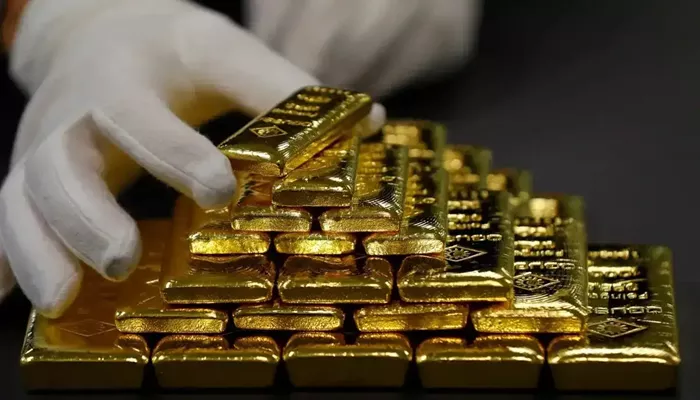Gold has been a valuable asset for centuries. It is used for jewelry, investments, and even as a form of currency. A gold ingot, also known as a gold bar, is a refined piece of gold used for trade and investment. But how much is a gold ingot worth?
The value of a gold ingot depends on several factors, including its weight, purity, and market price. Gold prices change daily based on supply and demand. In this article, we will explore what determines the price of a gold ingot and how you can calculate its worth.
What Is a Gold Ingot?
A gold ingot is a solid bar of gold that has been refined and molded into a specific shape. These bars come in different sizes and weights, ranging from small one-gram bars to large kilogram-sized bars.
Gold ingots are often used by investors who want to store wealth in a physical form. They are also used by governments and financial institutions as a reserve asset.
Factors That Affect the Value of a Gold Ingot
The price of a gold ingot is influenced by several factors. The most important ones include:
The Weight of the Gold Ingot
Gold ingots come in different sizes. The most common weights are:
1 gram
10 grams
1 ounce (about 31.1 grams)
100 grams
1 kilogram (1000 grams)
The heavier the ingot, the more it is worth. However, smaller bars may sell for a slightly higher price per gram due to production and distribution costs.
The Purity of the Gold
Gold purity is measured in karats or fineness. Pure gold is 24 karats (99.99% pure). However, some gold bars contain small amounts of other metals such as silver or copper.
A gold ingot with 99.99% purity will be more valuable than one with lower purity. Investors usually prefer pure gold bars because they are easier to sell and have a higher value.
The Current Market Price of Gold
The gold market operates based on live prices that change daily. Gold is traded on global markets, and its price is influenced by economic conditions, inflation, central bank policies, and geopolitical events.
Gold prices are usually quoted per ounce. If the price of gold is $2,000 per ounce, then a 1-ounce gold ingot would be worth approximately $2,000.
Supply and Demand
Gold prices are affected by supply and demand. When demand for gold increases, prices go up. When there is less demand, prices go down.
Investors often buy gold in times of economic uncertainty. If inflation rises or stock markets become unstable, more people invest in gold, driving up its price.
Brand and Certification
Gold ingots from well-known refineries such as PAMP Suisse, Valcambi, and the Royal Canadian Mint often have a higher resale value. These bars come with certificates of authenticity and are trusted by buyers.
Certified gold ingots are easier to sell and are often priced higher than uncertified gold.
How to Calculate the Value of a Gold Ingot
To determine the worth of a gold ingot, follow these steps:
Find the Weight – Check the weight of your gold ingot in grams or ounces.
Determine the Purity – If the ingot is 99.99% pure, you can use its full weight in calculations. If it is less pure, you need to adjust the weight accordingly.
Check the Current Gold Price – Look at the live market price of gold per ounce or gram.
Multiply the Weight by the Gold Price – Use the formula:
Value = Weight × Gold Price per Gram
For example, if you have a 100-gram gold ingot and the price of gold is $65 per gram, the calculation would be:
100 grams × $65 = $6,500
This means the gold ingot is worth $6,500 based on the current gold price.
Where to Buy and Sell Gold Ingots
Gold ingots can be bought and sold through various channels, including:
Online Gold Dealers
Websites such as JM Bullion, APMEX, and Kitco sell gold ingots in different sizes. They also provide updated gold prices.
Local Jewelers and Gold Shops
Some jewelry stores and gold dealers buy and sell gold ingots. However, they may charge a higher markup.
Banks and Financial Institutions
Some banks sell gold bars, but they often have high premiums and strict buying requirements.
Precious Metals Exchanges
Gold exchanges allow investors to buy and sell gold bars with competitive pricing.
Taxes and Fees on Gold Ingots
When buying or selling a gold ingot, consider additional costs:
Sales Tax – Some countries or states apply taxes to gold purchases.
Premiums – Dealers add premiums to cover refining, transportation, and handling costs.
Storage Fees – If you store your gold in a vault, you may need to pay storage fees.
Should You Invest in Gold Ingots?
Gold is considered a safe-haven investment. Many investors buy gold to protect against inflation and economic crises.
Pros of Investing in Gold Ingots
Hedge Against Inflation – Gold retains its value over time.
Tangible Asset – Unlike stocks, you can hold physical gold.
High Liquidity – Gold can be easily sold worldwide.
Cons of Investing in Gold Ingots
Storage Costs – Physical gold needs safe storage.
No Passive Income – Unlike stocks or bonds, gold does not generate interest.
Price Fluctuations – Gold prices can be volatile.
Conclusion
The value of a gold ingot depends on its weight, purity, and the current market price of gold. While gold is a stable investment, prices fluctuate based on supply, demand, and global events.
If you are planning to buy or sell a gold ingot, check the live gold price, choose a reputable dealer, and consider storage and transaction costs. Investing in gold can be a good way to protect wealth, but it is important to understand the risks involved.
Related topics:
- Knowing the Weight of Gold: How Many Grams in a Troy Ounce?
- Why Are Gold Coins Different Prices?
- Gold Prices Steady Ahead of US Fed Decision; Experts Share MCX Strategy


